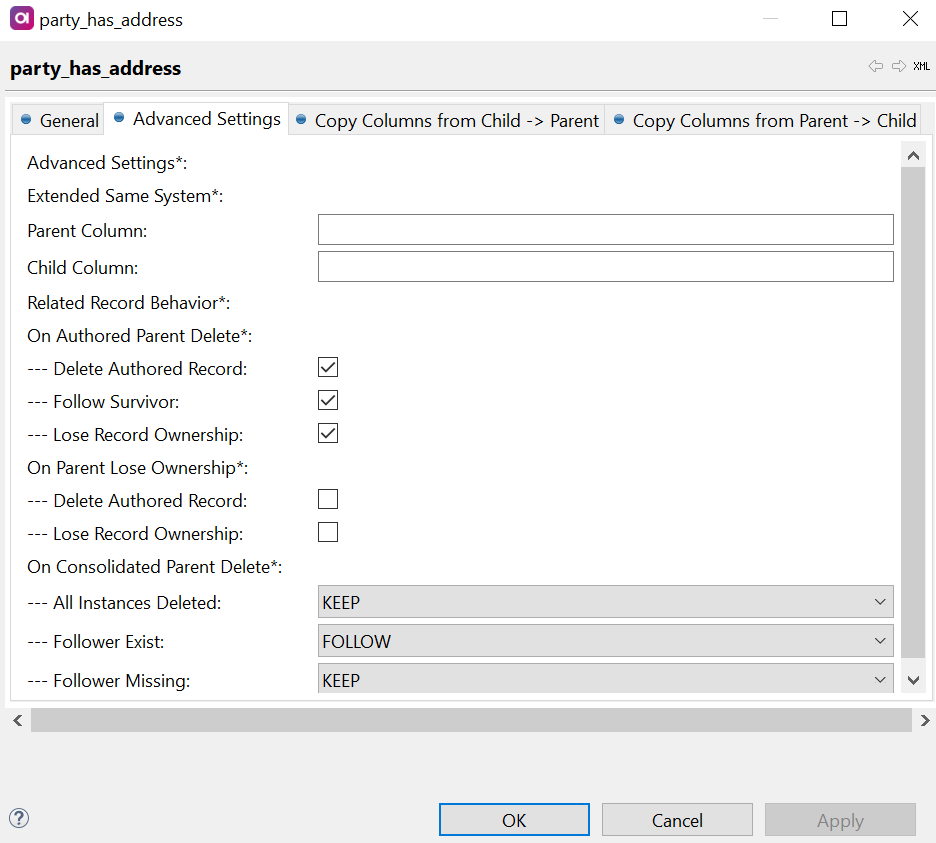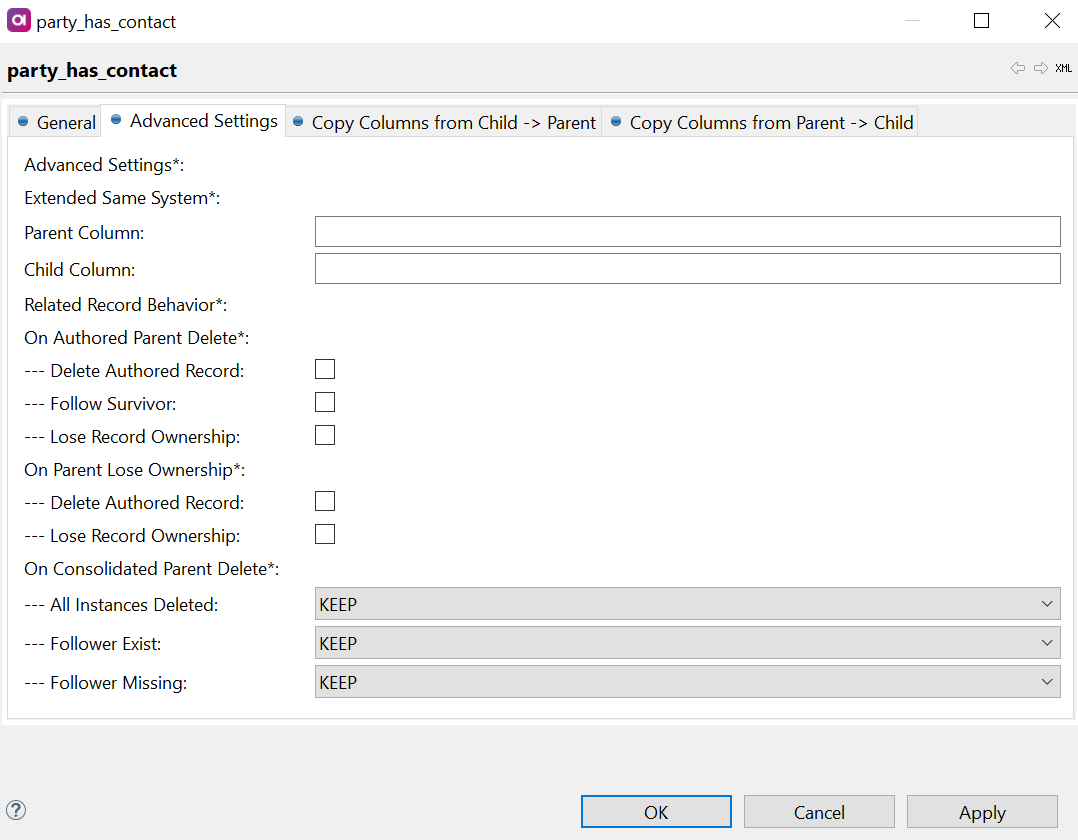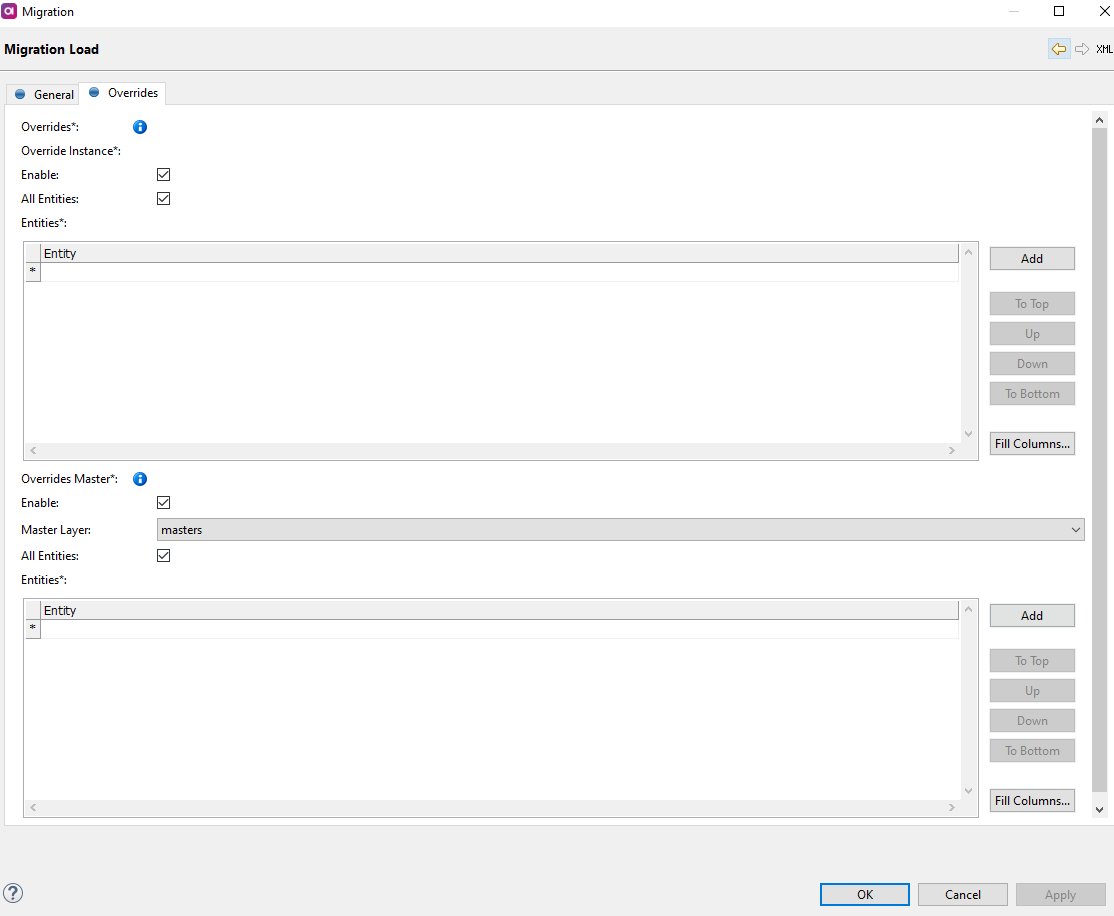Mixed Style in MDM
MDM handles both consolidated records and authored records. For consolidated records, the input comes from a single centralized hub, while authored records are those created directly in the master layer.
Additionally, MDM also supports the so-called mixed style, which refers to a combination of consolidated and authored records. Mixed style incorporates centralized, co-existence, and consolidation styles, where master data exists both in the MDM hub (R/W) and source systems (R/W).
Using mixed style means that if your organization has consolidated all data sources but some information is missing, you can fix those gaps yourself. For example, you can create a missing party record with all related entities or add a missing related record, such as address, contact, or consent.
Within mixed style, you can both edit and delete authored records. These edits are saved directly in the repository instead of storing overrides in the engine draft table.
The following capabilities help ensure you can efficiently use the mixed style in ONE MDM.
Record nature and overrides lifecycles
When mixed style is used, MDM can create authored records with authored record nature to fill gaps in data coverage. If you enter a missing record into the MDM yourself, this information is typically sent back to the primary system through custom-built processes, since many downstream processes need to consume data directly from primary systems rather than MDM.
Once the authored data reaches the primary system, it will eventually flow back to MDM through the standard data integration processes. At this point, MDM matches this returning record with the existing authored record and consolidates them.
However, the final record nature depends on the configured lifecycle:
-
Combined nature: MDM retains ownership of the authored record. The returning data from the primary system is connected but doesn’t override the master record and changes can only be made through MDM editing.
-
Consolidation nature: The record lifecycle is configured to transfer ownership away from MDM. The authored record loses its ownership status and therefore the master record is updated using standard consolidation rules.
In other words, this behavior effectively makes MDM a temporary staging area for missing information until the primary system takes over.
This lifecycle flexibility allows organizations to use MDM either as a permanent authoring solution or as a temporary gap-filling mechanism, depending on their data governance requirements. A similar mechanism is available when removing records.
The master record override is removed automatically if a merge operation results in the record being updated and one of these conditions is fulfilled:
-
The new values are the same as the override values for all attributes.
-
The new values are the same as the override values for selected attributes (depending on configuration).
For more information, see Configuring Record and Override Lifecycles.
Allowed operations on master records
The following table provides a summary of allowed operations for different types of master records.
| Set activity refers to Activate and Deactivate options in the MDM Web Application. |
| Master record type | Identification | Edit | Delete | Override | Remove override | Set activity | Remove activity | Merge | Rematch |
|---|---|---|---|---|---|---|---|---|---|
Consolidated |
eng_authored = 0 |
No |
No |
Yes |
Yes |
Yes |
Yes |
Yes |
Yes |
Authored |
eng_authored = 1 |
Yes |
Yes |
No |
No |
No |
No |
Yes |
Yes |
Combined |
eng_authored = 1 and at least 1 instance records |
Yes |
No |
No |
No |
Yes |
No |
Yes |
Yes |
Master matching
Instances can be matched to authored master records, including related entities.
To learn more, see Matching and Working with Matching.
For configuration instructions, refer to Configure Master Layer Matching.
Behavior of related records
You can also define how a change in a parent record affect its child records. To do this, select the desired relationship and navigate to the Advanced Settings tab.

When an authored parent record is deleted, three options are available: Delete Authored Record, Follow Survivor, and Lose Record Ownership.
| Option | If enabled | If disabled |
|---|---|---|
Delete Authored Record |
The authored child record is deleted (default). |
No change in the authored child record (orphan). |
Follow Survivor |
The |
No change in the |
Lose Record Ownership |
The child record loses ownership and becomes a consolidated record (default). |
The nature of the authored child record does not change. |
When an authored parent record loses its authored status, two options are available: Delete Authored Record and Lose Record Ownership.
| Option | If enabled | If disabled |
|---|---|---|
Delete Authored Record |
The authored child record is deleted. |
No change in the authored child record (orphan; default). |
Lose Record Ownership |
The child record loses ownership and becomes a consolidated record. |
The nature of the authored child record does not change (default). |
The following options are available when a consolidated parent record is deleted due to matching:
| A follower is a matching group that contains instances or acts as an ascendant of a record. |
| Options | ||
|---|---|---|
All Instances Deleted |
KEEP (default) |
No change in the child record (orphan). |
All Instances Deleted |
DELETE |
The child record is deleted. |
Follower Exist |
KEEP |
No change in the child record (orphan). |
Follower Exist |
FOLLOW (default) |
The |
Follower Missing |
KEEP (default) |
No change in the child record (orphan). |
Follower Missing |
EXCEPTION |
Exception thrown. |
To turn off RelatedRecordBehavior, ensure all options are turned off (that is, checkboxes are empty) and dropdowns are set to KEEP.

Migration of overrides and authored records
Override and authored record information is maintained when migrating data.


This can be particularly useful when as an MDM admin, you want to:
-
Migrate overrides (not only original values that have been overridden but also the values of overrides) during MDM upgrade or initial load.
-
Migrate authored records during MDM upgrade or initial load directly to master record, in bulk.
How to turn off mixed style functionality
On each master entity, you can turn off or on this style by setting enableAuthoring to true or false.
Was this page useful?
